
The Cycle of Terror and Tragedy is a painting by Graydon Parrish.

The Cycle of Terror and Tragedy is a painting by Graydon Parrish.
In 2002, Douglas Hyland, the director of the New Britain Museum of American Art, approached Graydon Parrish to create an allegorical tribute to victims of the September 11 attacks. The completed painting, The Cycle of Terror and Tragedy, is over 18 feet long and is one of the largest realist paintings ever created in America. Today it hangs in the Chase Wing of the New Britain Museum of American Art. [1] [2]
The painting has been noted for its academic style, inspired both by Jacques-Louis David and William Bouguereau, and for its highly symbolic content, said to express the cycle of denial and tragedy. It has been compared and contrasted with Pablo Picasso's Guernica and Théodore Géricault's The Raft of the Medusa , both comments on catastrophes. Aimee Pozorski wrote that "In fact, it is true that what Parrish has created is a lovely and symmetrical allegory: The twin bodies--strong, virile, and painted as if part of a Botticelli painting--are also allegories for the virile twin towers about to fall. The children holding planes represent the loss of innocence of an entire nation." [3]

As a literary device or artistic form, an allegory is a narrative or visual representation in which a character, place, or event can be interpreted to represent a hidden meaning with moral or political significance. Authors have used allegory throughout history in all forms of art to illustrate or convey complex ideas and concepts in ways that are comprehensible or striking to its viewers, readers, or listeners.

History painting is a genre in painting stated as a subject matter rather than artistic style. History paintings usually depict a moment in a narrative story, rather than a specific and static subject, as in a portrait. The term is derived from the wider senses of the word historia in Latin and histoire in French, meaning "story" or "narrative", and essentially means "story painting". Most history paintings are not of scenes from history, especially paintings from before about 1850.

Johannes Vermeer was a Dutch Baroque Period painter who specialized in domestic interior scenes of middle-class life. During his lifetime, he was a moderately successful provincial genre painter, recognized in Delft and The Hague. Nonetheless, he produced relatively few paintings and evidently was not wealthy, leaving his wife and children in debt at his death.

Pieter Bruegelthe Elder was the most significant artist of Dutch and Flemish Renaissance painting, a painter and printmaker, known for his landscapes and peasant scenes ; he was a pioneer in making both types of subject the focus in large paintings.

Max Carl Friedrich Beckmann was a German painter, draftsman, printmaker, sculptor, and writer. Although he is classified as an Expressionist artist, he rejected both the term and the movement. In the 1920s, he was associated with the New Objectivity, an outgrowth of Expressionism that opposed its introverted emotionalism. Even when dealing with light subject matter like circus performers, Beckmann often had an undercurrent of moodiness or unease in his works. By the 1930s, his work became more explicit in its horrifying imagery and distorted forms with combination of brutal realism and social criticism, coinciding with the rise of nazism in Germany.
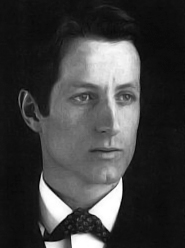
Maxfield Parrish was an American painter and illustrator active in the first half of the 20th century. He is known for his distinctive saturated hues and idealized neo-classical imagery. His career spanned fifty years and was wildly successful: His painting Daybreak (1922) is the most popular art print of the 20th century.

Alexis Rockman is an American contemporary artist known for his paintings that provide depictions of future landscapes as they might exist with impacts of climate change and evolution influenced by genetic engineering. He has exhibited his work in the United States since 1985, including a 2004 exhibition at the Brooklyn Museum, and internationally since 1989. He lives with his wife, Dorothy Spears in Warren, CT and NYC.

Edwin Parker "Cy" Twombly Jr. was an American painter, sculptor and photographer. He belonged to the generation of Robert Rauschenberg and Jasper Johns.
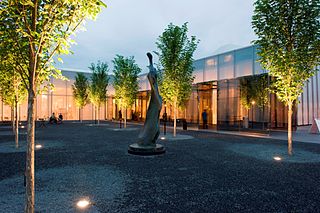
The North Carolina Museum of Art (NCMA) is an art museum in Raleigh, North Carolina. It opened in 1956 as the first major museum collection in the country to be formed by state legislation and funding. Since the initial 1947 appropriation that established its collection, the Museum has continued to be a model of enlightened public policy with free admission to the permanent collection. Today, it encompasses a collection that spans more than 5,000 years of artistic work from antiquity to the present, an amphitheater for outdoor performances, and a variety of celebrated exhibitions and public programs. The Museum features over 40 galleries as well as more than a dozen major works of art in the nation's largest museum park with 164-acres. One of the leading art museums in the American South, the NCMA recently completed a major expansion winning international acclaim for innovative approaches to energy-efficient design.

The New Britain Museum of American Art is an art museum in New Britain, Connecticut. Founded in 1903, it is the first museum in the country dedicated to American art.
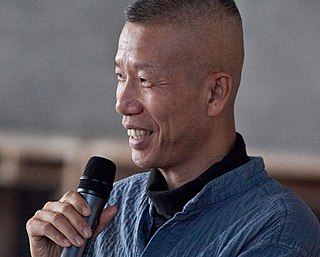
Cai Guo-Qiang is a Chinese artist who currently lives and works in New York City and New Jersey.
Dorothea Rockburne is an abstract painter, drawing inspiration primarily from her deep interest in mathematics and astronomy. Her work is geometric and abstract, seemingly simple but very precise to reflect the mathematical concepts she strives to concretize. "I wanted very much to see the equations I was studying, so I started making them in my studio," she has said. "I was visually solving equations." Rockburne's attraction to Mannerism has also influenced her work.

Classical Realism is an artistic movement in the late-20th and early 21st century in which drawing and painting place a high value upon skill and beauty, combining elements of 19th-century neoclassicism and realism.

The Parrish Art Museum is an art museum designed by Herzog & de Meuron Architects and located in Water Mill, New York, whereto it moved in 2012 from Southampton Village. The museum focuses extensively on work by artists from the artist colony of the South Shore and North Shore.
Paul Gordon Georges was an American painter. He painted large-scale figurative allegories and numerous self-portraits.

Graydon Parrish is a realist painter living in Austin, Texas. He is both trained in and an exponent of the atelier method which emphasizes classical painting techniques.
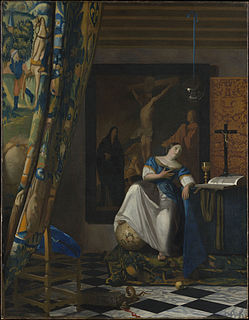
The Allegory of Faith, also known as Allegory of the Catholic Faith, is a Dutch Golden Age painting by Johannes Vermeer from about 1670–1672. It has been in the Metropolitan Museum of Art in New York since 1931.
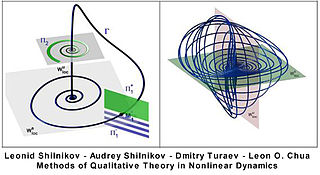
Post-contemporary (PoCo) is a forward-looking aesthetic philosophy distinguished by a re-constructive, global, human ethos which posits that the aesthetic experience is universal to humanity, and that this experience can inspire understanding and transformation. It has developed in tandem with new theories of Emergence in Complexity science, as well as advances in Biosemiotics. In art historical terms, “modern” and “contemporary” arts are limited to their era and are defined by stylistic and philosophical parameters - chief among them, a critique of the classical European tradition and constructive philosophy, and secondly, the Contemporary ethos is characterized by an emphasis on transient or exclusively contemporary issues which reflect the zeitgeist. Following the legacy of Modernism, Post-Modernism and Contemporary art follow the tradition of Deconstruction and questioning, while Post Contemporary emphasizes generating new, constructive hypotheses. However, modeled after the Scientific Method, both modes are inter-dependent as the question|answer cannot exist without each other. Thus, Post-Contemporary views the history of the humanities as branching and pluralist, rather than a linear path of development. Consequently, PoCo has chosen a forking path, builds upon knowledge from all eras, and values quality, sublimity, and empathy above novelty. PoCo emphasizes empathy for all, regardless of race, gender, sexual orientation, or creed.
Elise Ansel translates Old Master Paintings into a contemporary pictorial language. She draws upon familiar compositions from throughout the history of art. Ansel's paintings are derived and abstracted from Old Master paintings, modernising classical works. Ansel uses "an idiom of energetic gestural abstraction to mine art historical imagery for color and narrative structure, abstracting and interrupting representational content, in order to excavate and transform meanings and messages embedded in the works from which [her] paintings spring. [Her] work deconstructs pictorial language and authorial agency in order to address the myriad subtle ways the gender, identity and belief systems of the artist are embedded in the meaning of the work."